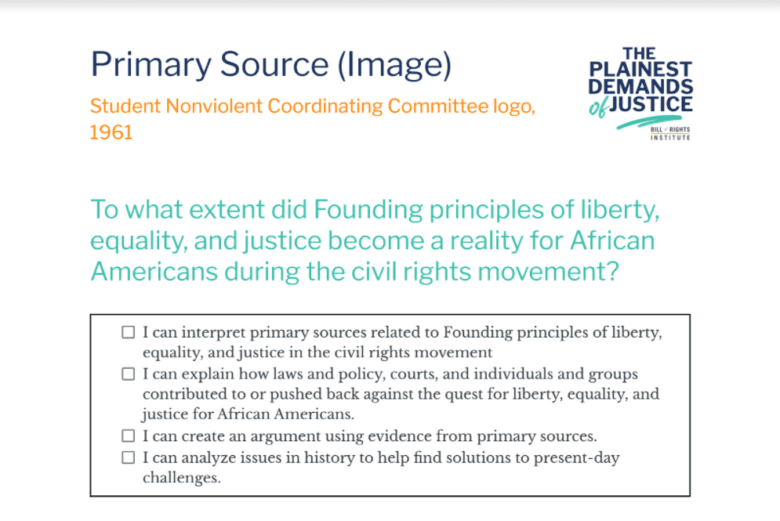Student Nonviolent Coordinating Committee Logo, 1961
To what extent did Founding principles of liberty, equality, and justice become a reality for African Americans during the civil rights movement?
- I can interpret primary sources related to Founding principles of liberty, equality, and justice in the civil rights movement
- I can explain how laws and policy, courts, and individuals and groups contributed to or pushed back against the quest for liberty, equality, and justice for African Americans.
- I can create an argument using evidence from primary sources.
- I can analyze issues in history to help find solutions to present-day challenges.
Building Context
Students played a prominent role in the civil rights movement. The Student Nonviolent Coordinating Committee (SNCC) was formed in 1960 as a way to bring more grassroots student efforts into the larger struggle for civil rights for African Americans. Early leaders include John Lewis, Diane Nash, and Marion Barry. Ella Baker, a colleague of Dr. Martin Luther King, Jr., was a key strategist and mentor for SNCC. Baker strongly believed that social change was best achieved through local action from rank and file members, rather than through influential leaders.
Source: https://en.wikipedia.org/wiki/Student_Nonviolent_Coordinating_Committee#/media/File

Comprehension and Analysis Questions
- What does this logo suggest about SNCC’s mission?
- SNCC’s leaders believed that change was achieved more effectively at the local level through grassroots action, instead of top-down through organizational leadership. Do you agree? Explain your reasoning.
